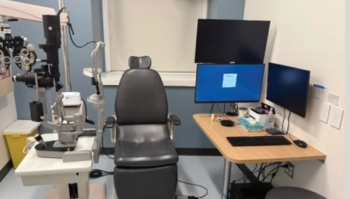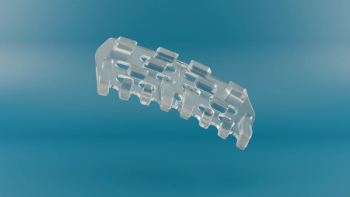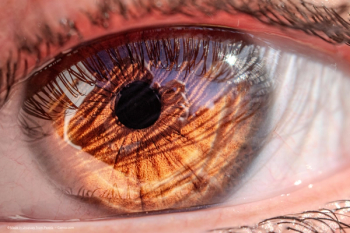
Endoscopic cyclophotocoagulation adds cumulative advantage to MIGS
A study found that the ICE2 procedure was more effective than iStent/phacoemulsification with no added risk. Safety was excellent in both groups.
Minimally invasive glaucoma surgery (MIGS) has changed the way we approach the management of glaucoma. MIGS offers the glaucoma surgeon safe and effective surgical options that have lowered the threshold for surgery, which was traditionally reserved for advanced or rapidly progressive disease.
The mindset of the glaucoma surgeon now has to evolve as well. Surgeons and patients should work together to take control of this blinding disease and no longer be a passenger.
This approach, often termed ‘interventional glaucoma’, requires the surgeon and patient to take an active rather than passive role in the management of glaucoma. Ocular surface disease, side effects of topical treatment and non-adherence should be addressed at every clinic visit to see whether more effective treatments can be offered.
Cumulative benefit
We are now entering the era of combination MIGS and exploring how to maximise the cumulative effects of these surgeries whilst maintaining the excellent safety profile that is its foundation.
Synergistic approaches to lowering intraocular pressure (IOP) are not novel; they have been used in topical treatment for many years, such as combining beta blockers to target inflow and prostaglandins to improve outflow.
The iStent (Glaukos Corporation) reduces IOP when used alone or during cataract surgery. This ab interno stent bypasses the trabecular meshwork, improving the eye’s ability to drain aqueous into the Schlemm’s canal. The device is safe and effective for patients with mild-to-moderate open-angle glaucoma.1-3
When implanted during cataract surgery, the implant adds to the potential IOP-lowering effect of phacoemulsification, which may reduce IOP to a small degree in open-angle disease and to a greater extent in primary angle-closure glaucoma.4-7
I have always been pleased with the reduction in IOP after iStent and phacoemulsification. I wondered whether adding endoscopic cyclophotocoagulation (ECP; BVI Medical) would enable me to achieve an even lower IOP postoperation. This could result in more of my patients’ glaucoma being controlled, as well as reducing the risk of them requiring filtering surgery in the future.
ECP safely and predictably decreases aqueous production through targeted ablation of the ciliary processes, thus lowering IOP.8-12 It is appropriate for the vast majority of patients, but it is contraindicated for underlying macular pathology such as macular oedema or a history of uveitis.
We recently completed a study that has been published in the British Journal of Ophthalmology comparing the outcomes for patients undergoing phacoemulsification with two iStents versus phacoemulsification with two iStents and ECP (ICE2 procedure).13 The longitudinal retrospective study took place over 12 months, with 63 eyes receiving the ICE2 procedure and 46 eyes receiving treatment without ECP.
We evaluated IOP, best-corrected visual acuity (BCVA) and number of medications at baseline, with follow-up at 1 and 5 weeks, and 3, 6 and 12 months. The primary outcome was IOP reduction at 12 months. The results were as follows:
• For the primary outcome of IOP reduction at 12 months, patients in the ICE2 group fared better. IOP decreased by 35% from medicated baseline, compared with 21% for iStent/phacoemulsification. Although the ICE2 group had higher IOPs at baseline, their final IOPs were lower (approximately 13 mmHg versus 14 mmHg).
• Both surgeries had a very similar safety profile. At week 1, the ICE2 eyes and the iStent/phacoemulsification eyes all looked very quiet. We found no added risk to the combined procedure, and there was no delay in patients’ postoperative visual recovery in the ICE2 group.
• Both groups had a similar reduction in medication at 12 months and similar final BCVA.
• ECP added about 5 minutes to surgery.
Conclusions
In essence, the ICE2 procedure was more effective than iStent/phacoemulsification, with no added risk. Safety was excellent in both groups.
After seeing the promising safety and efficacy of ICE2 at 1 year follow-up, I will continue to use this surgery for the appropriate patients moving forward. When we can get pressures down to 13, we know that a large proportion of patients’ glaucoma will not progress.
More studies are needed, ideally in the form of randomised trials. We need to establish whether the effect of ICE2 is sustained at 3 and 5 years.
We have already started studies that will assess the patients’ ocular surface and quality of life after MIGS, including ICE2. IOP control and disease control is the most important aspect of treatment, but the eye comfort and quality of life of our patients should not be overlooked.
Disclosures:
1. Wellik SR, Dale EA. A review of the iStent trabecular micro-bypass stent: safety and efficacy. Clin Ophthalmol 2015;9:677-684.
2. Guedes RAP, Gravina DM, Lake JC, et al. Intermediate results of iStent or iStent inject implantation combined with cataract surgery in a real-world setting: a longitudinal retrospective study. Ophthalmol Ther 2019;8:87-100.
3. Craven ER, Katz LJ, Wells JM, et al. Cataract surgery with trabecular micro-bypass stent implantation in patients with mild-to-moderate open-angle glaucoma and cataract: two-year follow-up. J Cataract Refract Surg 2012;38:1339-1345.
4. Thomas R, Walland, M, Thomas A, Mengersen K. Lowering of Intraocular Pressure After Phacoemulsification in Primary Open-Angle and Angle-Closure Glaucoma: A Bayesian Analysis. Asia Pac J Ophthalmol (Phila). 2016 Jan-Feb;5(1):79-84.
5. Armstrong JJ, Wasiuta T, Kiatos E, et al. The effects of phacoemulsification on intraocular pressure and topical medication use in patients with glaucoma: a systematic review and meta-analysis of 3-year data. J Glaucoma 2017;26:511–522.
6. Friedman DS, Jampel HD, Lubomski LH, et al. Surgical strategies for coexisting glaucoma and cataract: an evidence-based update. Ophthalmology 2002;109:1902–1913.
7. Vizzeri G, Weinreb RN. Cataract surgery and glaucoma. Curr Opin Ophthalmol 2010;21:20-24.
8. Yip LW, Yong SO, Earnest A, et al. Endoscopic cyclophotocoagulation for the treatment of glaucoma: an Asian experience. Clin Exp Ophthalmol 2009;37:692-697.
9. Lima FEL, Carvalho DM, Avila MP. Phacoemulsification and endoscopic cyclophotocoagulation as primary surgical procedure in coexisting cataract and glaucoma. Arq Bras Oftalmol 2010;73:419-422.
10. Kahook MY, Lathrop KL, Noecker RJ. One-site versus two-site endoscopic cyclophotocoagulation. J Glaucoma 2007;16:527530.
11. Francis BA, Berke SJ, Dustin L, et al. Endoscopic cyclophotocoagulation combined with phacoemulsification versus phacoemulsification alone in medically controlled glaucoma. J Cataract Refract Surg 2014;40:13131321.
12. Lindfield D, Ritchie RW, Griffiths MF. ’Phaco-ECP’: combined endoscopic cyclophotocoagulation and cataract surgery to augment medical control of glaucoma. BMJ Open. 2012 May 30;2(3).
13. Pantalon AD, Barata ADO, Georgopoulos M, Ratnarajan G. Outcomes of phacoemulsification combined with two iStent inject trabecular microbypass stents with or without endocyclophotocoagulation. Br J Ophthalmol. 2020 Jan 24.
GOK RATNARAJAN, BSC, MBBS, FRCOPHTH, MD
E: [email protected]
Dr Ratnarajan is a consultant ophthalmic surgeon and director of glaucoma at the Eye Unit in Queen Victoria Hospital, East Grinstead, UK. He has received honorariums from BVI.
Newsletter
Get the essential updates shaping the future of pharma manufacturing and compliance—subscribe today to Pharmaceutical Technology and never miss a breakthrough.







































